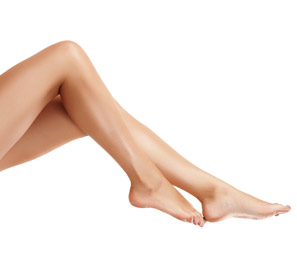Definitive Depilation

Why?
Excessive hairiness is relatively frequent and is felt by many people to be unaesthetic. Furthermore, the aesthetic standards of our time require that certain parts of the body be perfectly hairless; the use of a razor, an electric appliance or wax enables this objective to be achieved, but only temporarily.
Action Mechanism
For a hair not to regrow, the area between the hair and the pilar bulb needs to be destroyed. This area is the one that is located most deeply in the skin (between two and seven mm). The light emitted by the laser is absorbed by the melanin, the pigment found inside the hair. The luminous energy captured by the hair is instantaneously converted into thermal energy. The hair is thus brought up to a temperature of about 70 degrees. The hair thus heated will transmit its heat to the structures that surround it.
Thus, if the hair is well implanted at the bottom of its cell (the Anagen phase), the underlying structures will be heated and therefore destroyed: that particular hair will not grow again. If, on the other hand, the hair is in another phase (Catagen or Telogen), the heat will not be transmitted to the level of the underlying structures. Those structures will remain intact and will be able to generate a new hair. This is why several sessions are needed for treating each area.
Areas, Indications and Contraindications
Areas and Types of Hair
Thanks to the state-of-the-art laser used at Beclinic (Velure S 800), all areas and every type of skin can be treated. However, the colour of the hair and the hairs remains important: Hairs that are russet-red, or white to very light blond, are very difficult, even impossible to treat without pre-pigmentation. The doctor will tell you more on this subject during a first consultation.
Contraindications, Recommendations and Risks
Tanning should be strictly avoided before the sessions are carried out. You are also advised to discontinue any depilation by wax, machine, pincers or depilatory cream three weeks before the session, in order to optimise it. Lastly, the hairs cannot be lightened. The area to be treated must be shaved two to five days before the treatment so that the regrowth can be seen on the day of the treatment. You are strongly advised against using self-tanning creams or creams containing fruit acids during the periods of treatment, in order to reduce the risk of discolouration. You are also advised against wearing perfume or make-up on the day of the session.
Unwanted effects are extremely rare (pain, tingling, burning on rare occasions, and hyper or hypo pigmentation). The state-of-the-art technology that is used is completely safe.
In rare cases, discolouration of the skin can be observed. This discolouration will disappear of its own accord, but can persist for a few weeks. There is no known lasting complication.
Areas of skin that are actively infectious cannot be treated. Pregnancy is also a contraindication.
Objectives
Laser hair removal can get rid of unwanted hair in the long term.

Session Procedure
Laser depilation sessions are virtually painless: a fleeting tingling can be felt at the time of the luminous flash.
The length of a session depends upon the extent of the area to be treated: as an indication, we reckon on a few minutes for the armpits or the bikini line, 20 minutes for a complete beard area and 45 minutes for the lower legs or the complete back. It is usually considered that six to eight treatment sessions are needed for each area. During each of these laser sessions, about 20% of the hairs will be destroyed.
Each laser depilation session is followed by an interval of one to two months, during which it is forbidden to expose the treated area to the sun. Between each laser depilation session, no traditional depilation technique (wax, pincers, electrical epilator, etc) should be used. Only a razor or some depilatory cream could be used for maintaining the area concerned.
After the initial cycle of six to eight sessions, it is sometimes necessary to have an additional session once a year or every two years.

